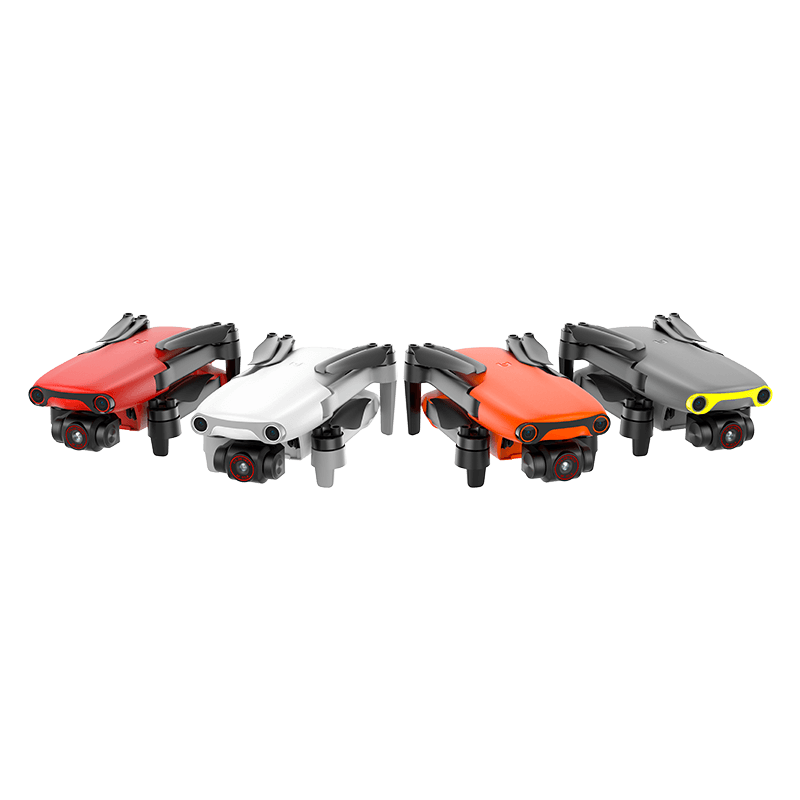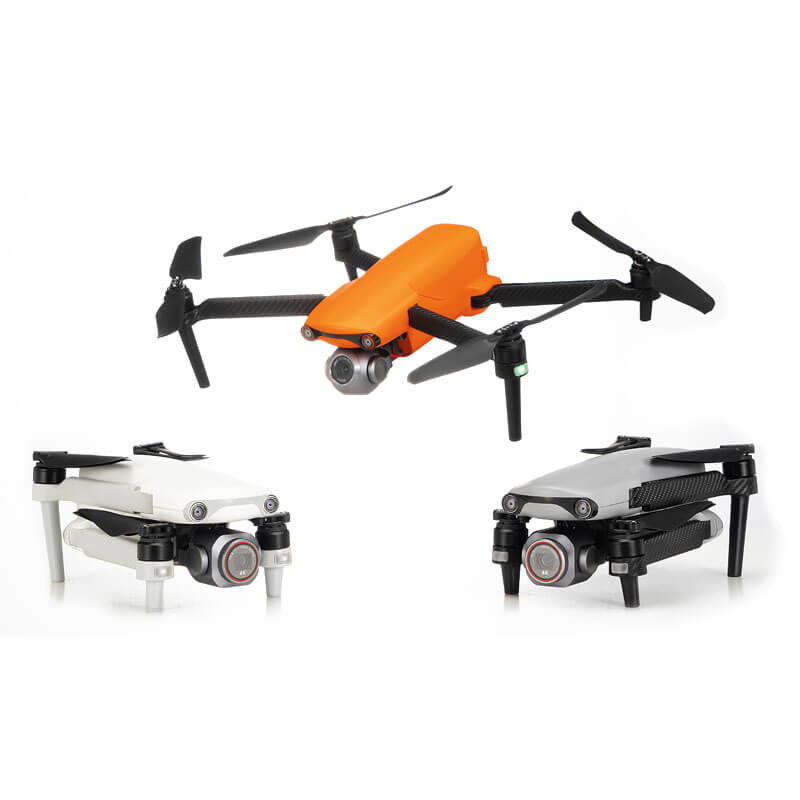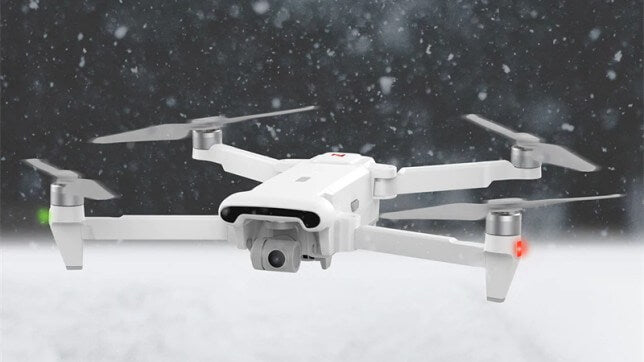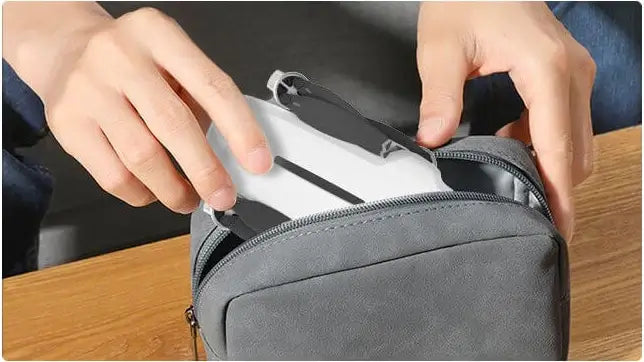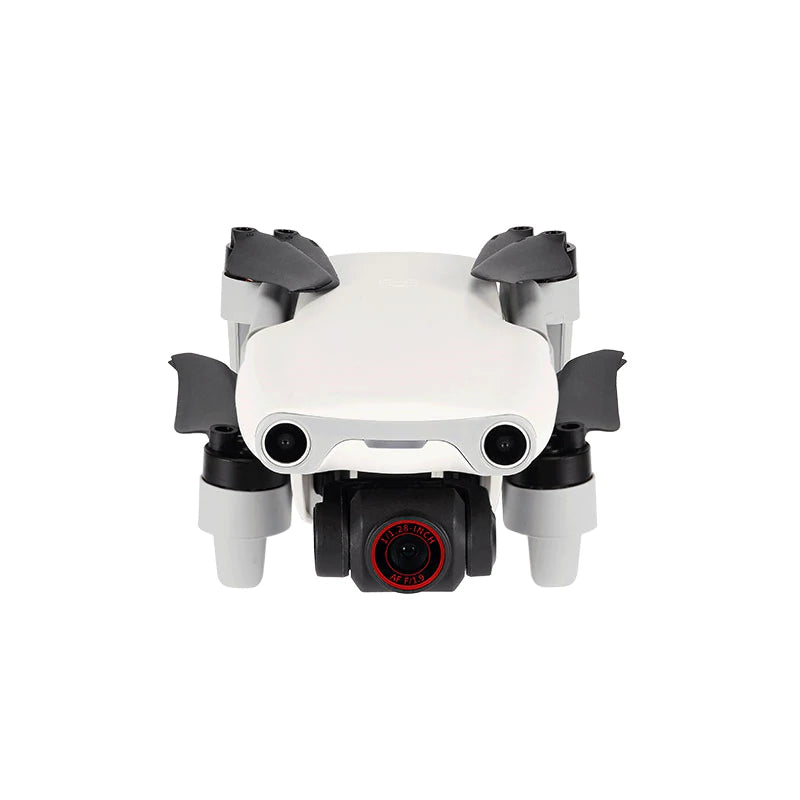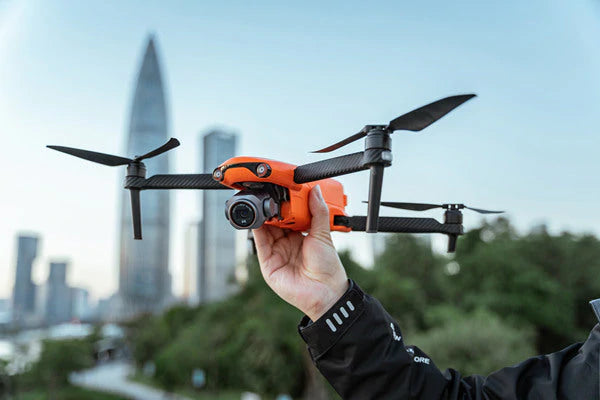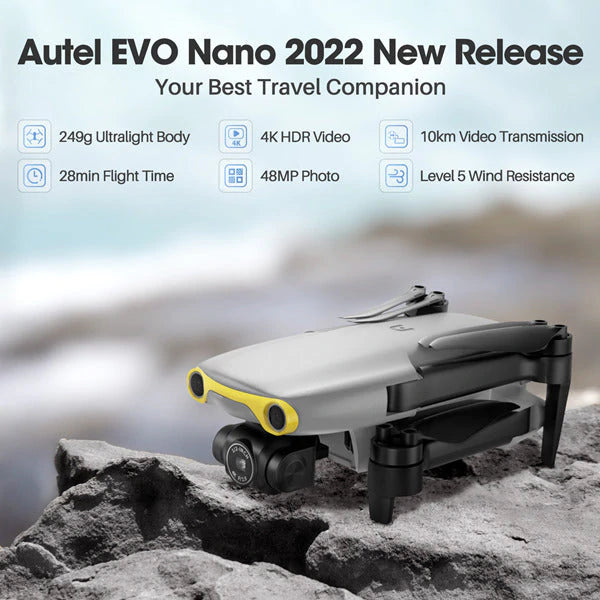Healthy competition will make really good drones. Autel will be a strong competitor to the DJI Drone that dominates the current global drone market, and Autel's mini Nano series of drones has become a bright presence.
Autel EVO Nano Series | Is this The Best Mini Drone on The Market?

The Autel EVO Nano comes with two different camera options. More expensive 1/2" sensor version and cheaper 1/2.8" sensor version. Generally, a larger sensor (1/2 inch) will allow for better low-light photography and better detail. However, for most people looking for premium but not professional quality, the smaller, more affordable 1/2.8-inch version is more than enough. Both cameras are stabilized by a 3-axis gimbal for smooth and stable footage.
Obstacle Avoidance Function of Autel EVO Nano Series Drones
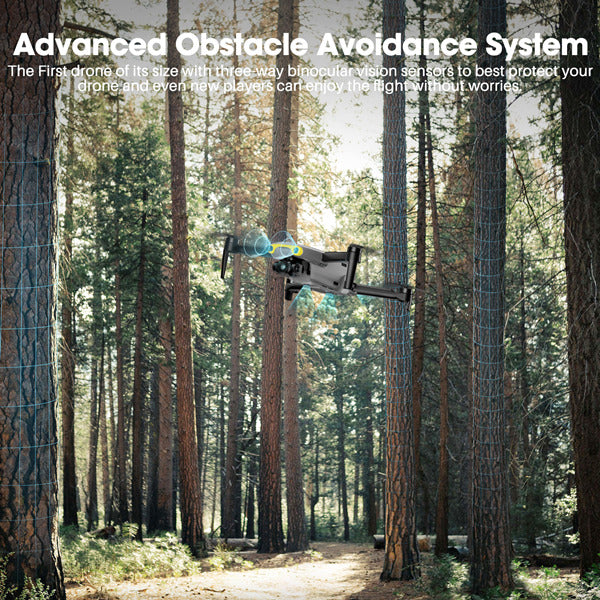
The Nano and Nano+ are the first products of their kind from Autel with obstacle avoidance.
For new drone pilots, this feature will give great support while flying and avoid collision issues. Both the Nano and Nano+ are equipped with three-way binocular vision sensors that enable the drone to perceive obstacles in front of, behind and below it.
Compared with DJI MINI2, Nano and Nano+ win, it is a pity that DJI MINI2 does not have obstacle avoidance. If you are a new drone pilot, I would recommend the Autel EVO Nano series. After all, a crash means the loss of the drone.
Autel SkyLink Image Transmission: Long Distance, Less Interference
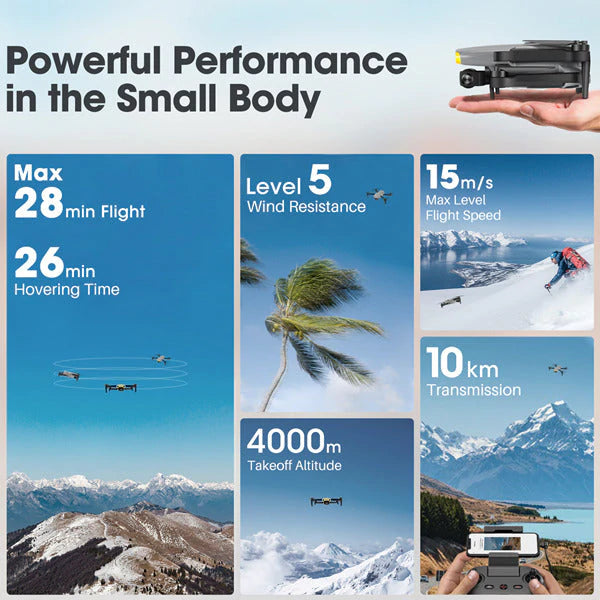
As for the transmission technology, the Autel EVO Nano series does not rely on Wi-Fi communication. Transmit longer distances while maintaining crisp, crisp visuals with the all-new Autel SkyLink, the most powerful image transmission system to date, offering a 6.2-mile transmission range, 2.7K/30FPS transmission quality and exceptional resistance Jamming capability while relaying stunning QHD video. It supports three operating frequencies: 2.400-2.4835GHz; 5.725-5.850GHz; 5.150-5.250GHz. Compared with DJI MINI2 and DJI Air 2S, it supports more stable transmission.
| Aircraft | Model | EVO Nano | EVO Nano+ | DJI MINI2 | DJI Air 2S |
| Takeoff Weight: | <249g | <249g | < 249 g | 595g | |
| Dimensionswith (propellers): | Folded: 142×94×55mm | Folded: 142×94×55mm | Folded: 138×81×58 mm (L×W×H) | Folded:180×97×77 mm(L×W×H) | |
| Unfolded: 260×325×55mm | Unfolded: 260×325×55mm | Unfolded (with propellers): 245×289×56 mm (L×W×H) | Unfolded:183×253×77 mm (length×width×height) | ||
| Max Service Ceiling Above Sea Level | 4000m | 4000m | 4000m | 5000 m | |
| Max Flight Time (in windless conditions) |
28min | 28min | 31min | 31min | |
| Max Hovering Time (no wind) | 26min | 26min | 30min | 30min | |
| Max Flight Distance (no wind) | 16.8km | 16.8km | 18.5 km | 18.5 km | |
| Max Wind Speed Resistance | Level 5 | Level 5 | 8.5-10.5 m/s (Level 5) | 8.5-10.7 m/s (Level 5) | |
| camera | |||||
| Photo format | JPG(8-bit) / DNG(10-bit) / JPG+DNG | JPG(8-bit) / DNG(10-bit) / JPG+DNG | JPEG/DNG (RAW) | JPEG/DNG (RAW) | |
| Photo resolution | 48MP:8000x6000(4:3) | 50MP:8192x6144(4:3) | 4:3: 4000×3000 | 20 MP | |
| 12MP:4000x3000(4:3) | 12.5MP:4096x3072(4:3) | 16:9: 4000×2250 | 5472×3648 (3:2) | ||
| 4K:3840x2160(16:9) | 4K:3840x2160(16:9) | 5472×3078 (16:9) | |||
| Video coding format | H265/H264 | H265/H264 | / | / | |
| Video resolution | 3840x2160 p30/25/24 | 3840x2160 p30/25/24 | 4K: 3840×2160 @ 24/25/30fps | 5.4K: 5472×3078 @ 24/25/30 fps | |
| 2720x1528 p30/25/24 | 2720x1528 p30/25/24 | 2.7K: 2720×1530 @ 24/25/30/48/50/60fps | 4K Ultra HD: 3840×2160 @ 24/25/30/48/50/60 fps | ||
| 1920x1080 p60/50/48/30/25/24 | 1920x1080 p60/50/48/30/25/24 | FHD: 1920×1080 @ 24/25/30/48/50/60fps | 2.7K: 2688x1512 @ 24/25/30/48/50/60 fps | ||
| HDR: | HDR: | FHD: 1920×1080 @ 24/25/30/48/50/60/120 fps | |||
| 3840x2160 p30/25/24 | 3840x2160 p30/25/24 | MP4/MOV (H.264/MPEG-4 AVC, H.265/HEVC) | |||
| 2720x1528 p30/25/24 | 2720x1528 p30/25/24 | ||||
| 1920x1080 p60/50/48/30/25/24 | 1920x1080 p60/50/48/30/25/24 | ||||
| Max bitrate | 100Mbps | 100Mbps | 100 Mbps | 150 Mbps | |
| ISO range | Video:ISO100 ~ ISO3200 | Video:ISO100 ~ ISO6400 | Video: 100-3200 (Auto); 100-3200 (Manual) | Video: 100-3200 (Auto); 100-6400 (Manual) | |
| Photo:ISO100 ~ ISO3200 | Photo:ISO100 ~ ISO6400 | Photos: 100-3200 (Auto); 100-3200 (Manual) | 10-Bit Dlog-M Video: 100-800 (Auto);100-1600 (Manual) | ||
| Photo: 100-3200 (Auto); 100-12800 (Manual) | |||||
| Gimbal | Controllable Range | Tilt: -90°~ 0° | Tilt: -90°~ 0° | Tilt: -90° to 0° (default setting); -90° to +20° (extended) | Tilt: -90° to 0°(default); -90° to 24° (extended) |
| Stabilization | 3-axis (tilt, roll, pan) | 3-axis (tilt, roll, pan) | 3-axis (tilt, roll, pan) | 3-axis (tilt, roll, pan) |

